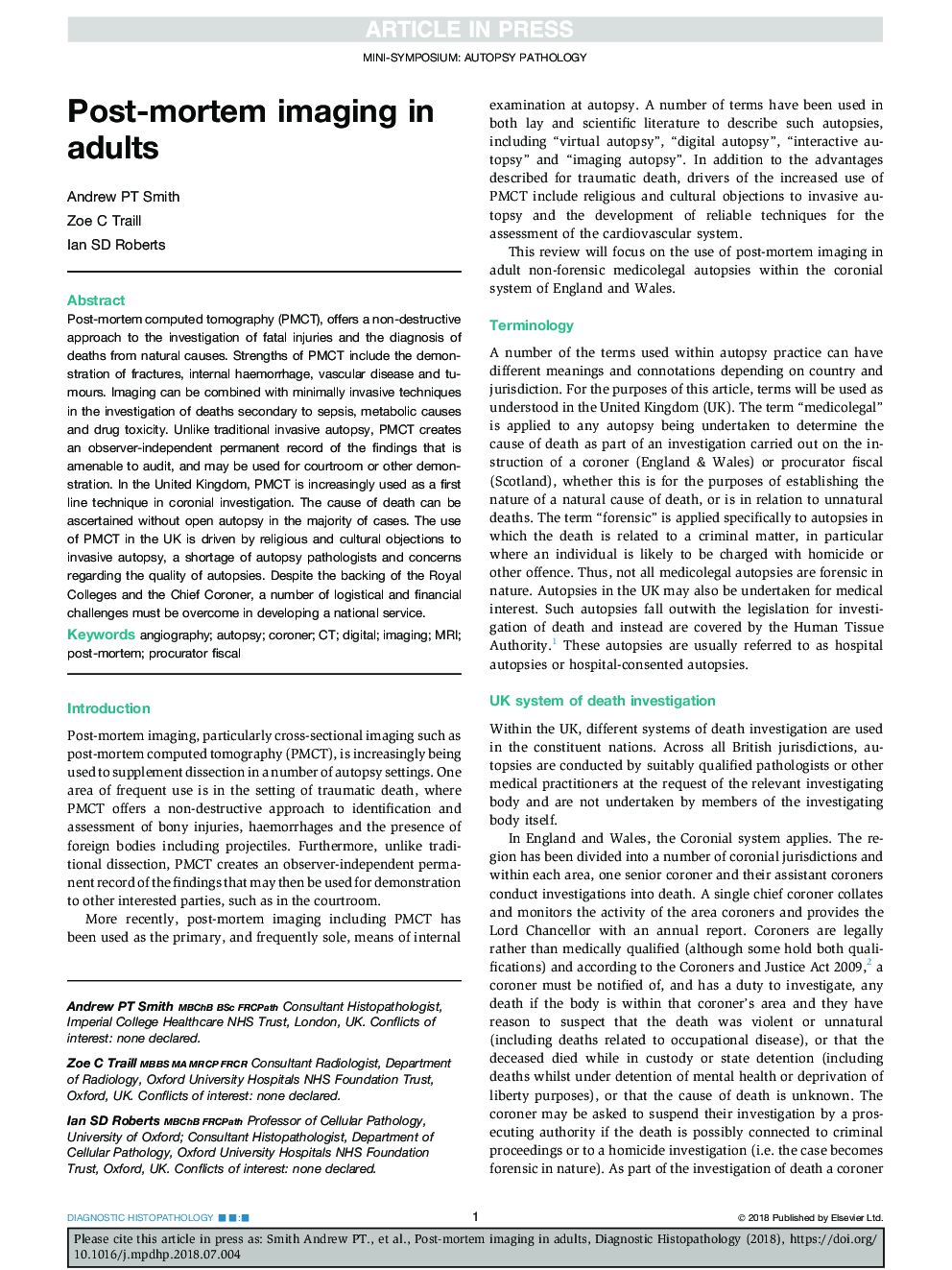| Article ID | Journal | Published Year | Pages | File Type |
|---|---|---|---|---|
| 11018047 | Diagnostic Histopathology | 2018 | 7 Pages |
Abstract
Post-mortem computed tomography (PMCT), offers a non-destructive approach to the investigation of fatal injuries and the diagnosis of deaths from natural causes. Strengths of PMCT include the demonstration of fractures, internal haemorrhage, vascular disease and tumours. Imaging can be combined with minimally invasive techniques in the investigation of deaths secondary to sepsis, metabolic causes and drug toxicity. Unlike traditional invasive autopsy, PMCT creates an observer-independent permanent record of the findings that is amenable to audit, and may be used for courtroom or other demonstration. In the United Kingdom, PMCT is increasingly used as a first line technique in coronial investigation. The cause of death can be ascertained without open autopsy in the majority of cases. The use of PMCT in the UK is driven by religious and cultural objections to invasive autopsy, a shortage of autopsy pathologists and concerns regarding the quality of autopsies. Despite the backing of the Royal Colleges and the Chief Coroner, a number of logistical and financial challenges must be overcome in developing a national service.
Related Topics
Health Sciences
Medicine and Dentistry
Pathology and Medical Technology
Authors
Andrew PT. Smith, Zoe C. Traill, Ian SD. Roberts,
